Authentic Goan-style Muga Gathi. Sprouted Moong Curry recipe with step-by-step photos and instructions. Also, learn how to sprout moong or green gram and easily remove its skin.
Muga Gathi or Mooga Gathi is one of those no-onion no-garlic recipes that taste so unbelievably delectable. I am truly amazed how this moong sprouts curry turns out so splendid although it uses minimal spices. Moong Gathi is simple and easy to prepare. The only time required is to sprout the moong. Hence, you need to plan in advance.
What is Muga Gathi?

Muga gathi or Mooga Gathi is one of the classic and traditional Goan recipes prepared during religious festivals, poojas, weddings etc. It is commonly prepared in Goa in the month of Shravan, especially Ganesh Chaturthi. Muga Gathi is also served in most of the Goan temples along with other traditional food during ‘Mahaprasada‘.
This moong sprouts recipe is a coconut-based gravy that uses sprouted moong (green gram) and some minimal spices. A tempering of mustard seeds, curry leaves and ‘Shankar Chaap hing‘ (more about this hing or asafoetida in detail, later in the post) takes the flavour of mooga gathi to another level.
This sprouted mung curry is a perfect way to include wholesome protein in the diet. Sprouting changes and enhances the nutritional value of legumes, beans etc. Muga gathi is an excellent way to include sprouts of moong in your diet.
The Goan Mooga Gathi recipe is different from any other sprouted moong curry of other cuisines.
Key Ingredients for Muga Gathi

The key ingredients of the green moong sprouts recipe are:-
- Sprouted Moong
- Grated Coconut
- Green Chillies
- Few spices like coriander seeds, black pepper and red chillies.
- For the tempering we will need mustard seeds, curry leaves and Shankar Chaap hing.
What is Shankar Chaap Hing?
Hing or asafoetida is a resinous gum (dried sap) obtained from the roots of a herbaceous plant. This gum is dried and ground to a coarse powder. It is a vital ingredient in Indian cooking. It adds a distinct flavour and aroma to many recipes that require tempering.
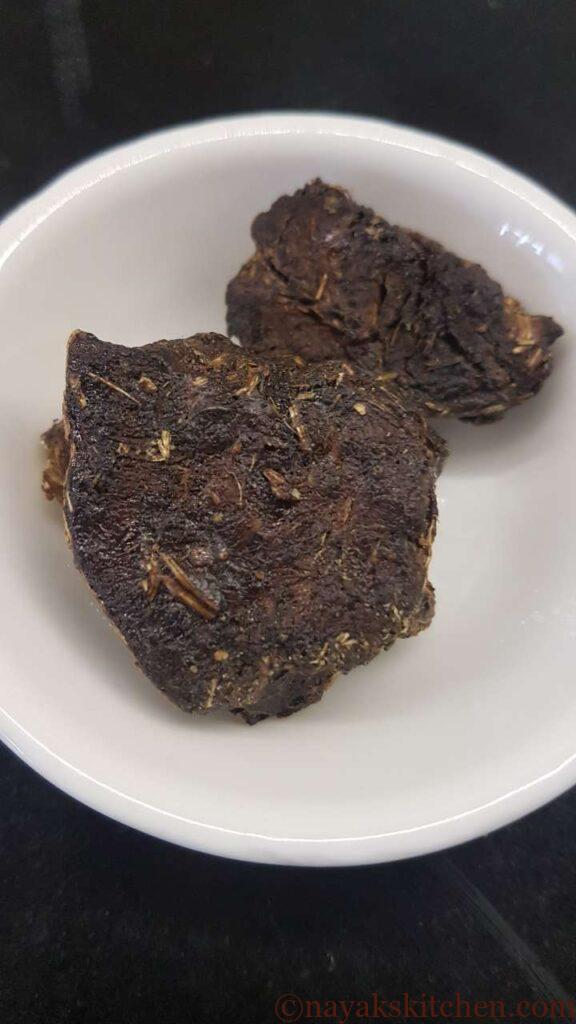
However, most hing available in stores is ‘compounded hing‘ i.e. it is mixed with wheat flour (also known as ‘Bandhani Hing‘). Shankar Chaap Hing is the pure form of hing or asafoetida.
‘Shankar Chaap‘ refers to the brand name. It has become synonymous with this pure asafoetida. If you ask a shopkeeper to give you Shankar Chaap Hing he will give you pieces of this dried hing. However, this hing has to be roasted and powdered before use.
This hing is a bit more expensive than the compounded hing powders but its flavour is very intense. Also, a very small piece of it is enough to provide a heavenly aroma to the recipe.
Moreover, the secret to an ‘authentic muga gathi‘ lies in the addition of this pure form of hing.
How to sprout moong or green gram?
Although different types of sprouts are now available in supermarkets, I prefer to sprout legumes at home. Store-bought sprouts have preservatives in them to increase their shelf-life.
Sprouting moong at home is very easy. Moong or green gram is soaked in water. After a few hours the outer green skin breaks open and seeds begin to germinate. Small shoots start appearing.

Step-By-Step sprouting of moong
- Clean the moong (green gram) and remove any stones. Soak in sufficient water for about 8-10 hrs.


2. The moong’s skin will split in two, once it is soaked well. A few green grams will have started showing sprouts too. Now, drain the water completely. You can either tie the soaked moong in a muslin cloth or keep it covered in a large vessel. Keep this vessel in a warm place to enable faster sprouting.
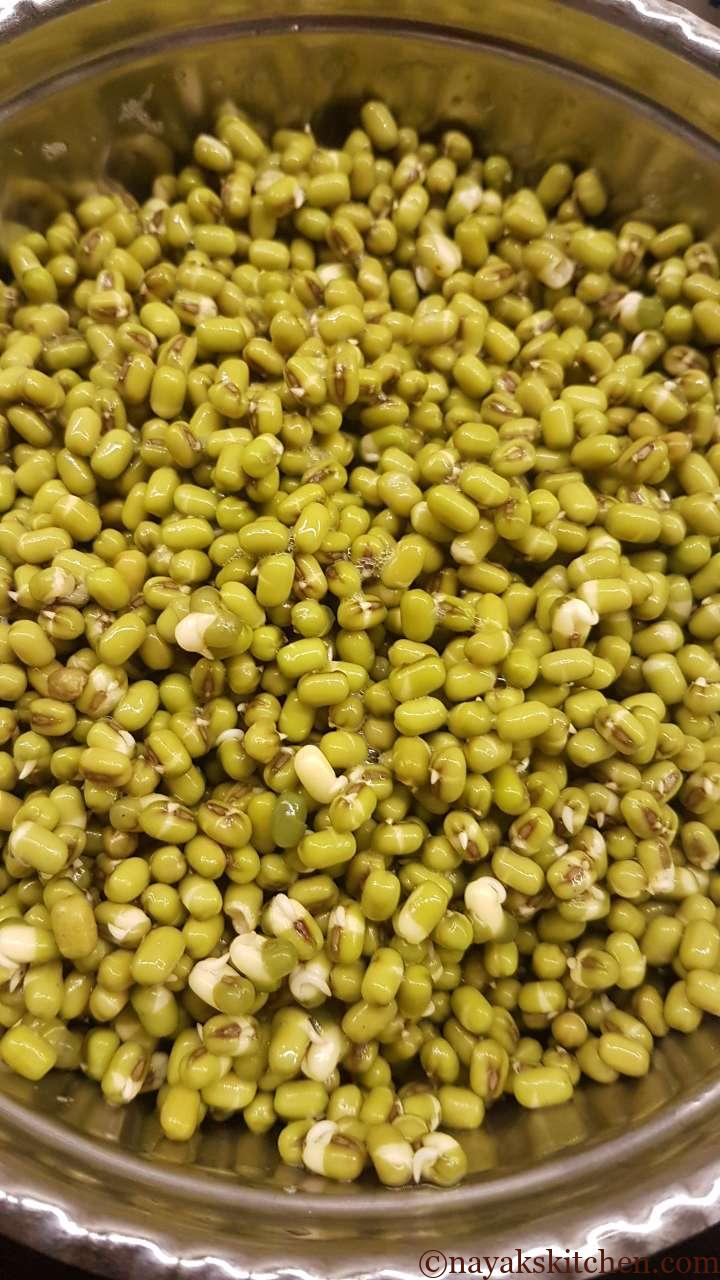
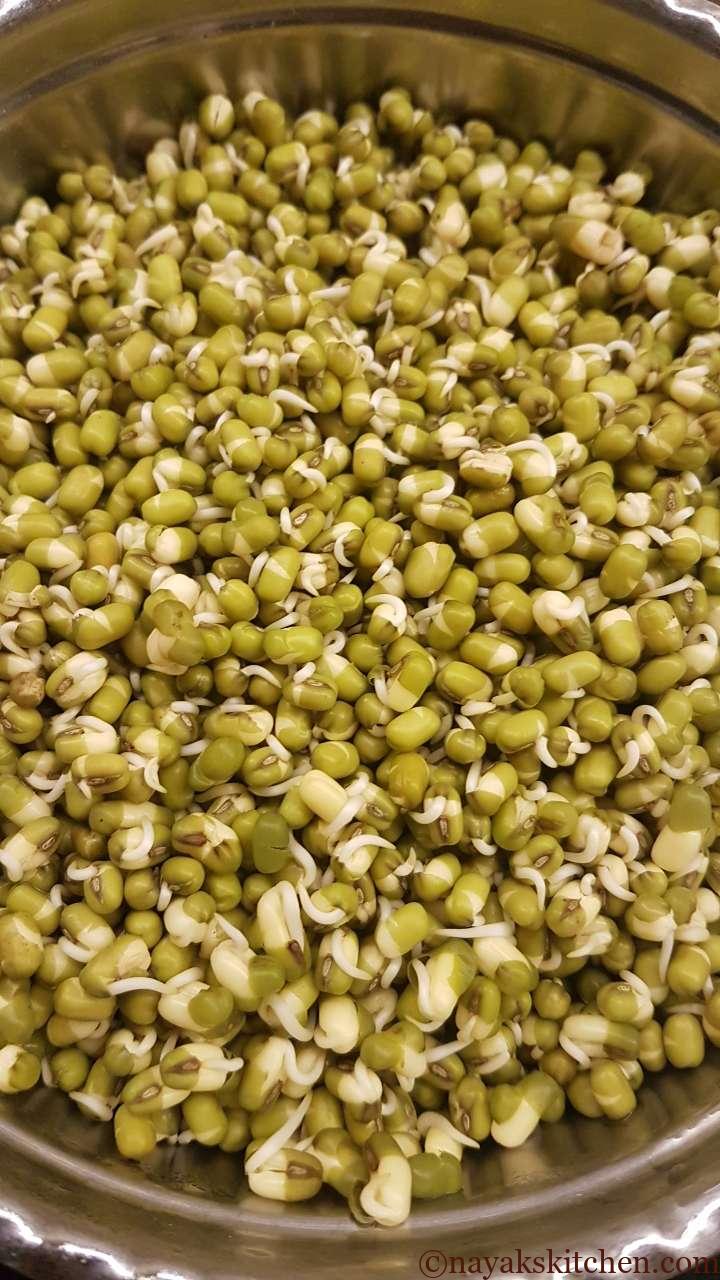
3. Once the moong sprout well, take them in a deep bottomed vessel. Further, add water up to the top of the vessel. Leave it covered with water aside, for 7-8 hours.


4. After 7-8 hours you will notice that the skin of the green gram or moong has started floating above the water. Also, the moong has settled below. You will be now easily able to separate the moong from the skins.


5. Gently scoop out the moong skins and discard them. If the skins settle to the bottom of the vessel, drain the water. Add fresh water again. The skins will slowly rise to the top. Likewise, scoop the skins as much as possible.
Keep repeating this till most of the skins are removed. Sprouted moong is now ready to use in your recipe. You can store these green moong sprouts for 3-4 days in the refrigerator.
Note: You can use the moong sprouts with the skin. They are completely edible.


Benefits of Sprouted Moong
Moog or Mung beans are small green beans that belong to the legume family. Also known as green gram, they can be eaten by sprouting them or without sprouting. However, germinated green gram has a high nutritional value.
How to eat sprouted moong? You can eat them raw in salads or stir fry them, prepare traditional usals or curries.
It is an excellent plant-based protein rich in essential amino acids. Moreover, germinated mung beans contain fewer calories and have innumerable health benefits. Here are a few listed below:-
- Sprouting reduces the levels of phytic acid. Phytic acid is an anti-nutrient, which can reduce the absorption of minerals like magnesium, zinc and calcium.
- Sprouted moong is easy to digest and hence aids in digestive health.
- Rich source of fibre, therefore, brings in satiety and prevents overeating. Good for your weight loss goals.
- Green moong sprouts lower LDL (bad cholesterol) and keep diabetes in check.
- They are a rich source of iron and help in treating anaemia.
- Sprouts of moong also contain folic acid, magnesium, omega 3 and omega 6 fatty acids.
These are a few of the manifold benefits of eating moong. Do include them in your diet.
Tips
- Always use a fresh batch of moong. Aged moong may not sprout well.
- Once sprouted, check the moong for any hard, unsoaked moong. This is a must as you might hurt your teeth while eating.
- If you prefer you can use the moong sprouts with the skin. They are completely edible.
- Cooking moong – You can cook moong either in an open pot or in a pressure cooker. However, if pressure cooking, cook for 1 whistle only. Else you will get a paste of moong.
- Green chillies give that distinct taste of Muga gathi. Do not skip or substitute with red chillies. However, adjust the number of chillies as per their pungency.
- Shankar Chaap Hing is yet another vital ingredient for muga gathi. However, you can use any other hing if unavailable.
- Mooga gathi gravy is always of thicker consistency. So do not add much water.
Notes
- I usually soak 1 cup (250 ml) of raw Moong. This yields 4 cups of sprouted moong. Then I divide it into half. One half I use for Mooga Gathi and the other half for Moong Usal.
- Just to give you a perspective in order to plan in advance – If you intend to prepare muga gathi on Monday, soak moong on Saturday evening. The next morning (i.e. on Sunday) drain the water and leave for sprouting at a warm place. By evening the moong will have sprouted. At night, immerse the sprouted moong in water. The next day (i.e. Monday) scoop the moong as the skins will be floating above the water. Thus, sprouts will be ready on Monday morning.
Serving Suggestions
Muga Gathi pairs well with poori. But, you can also serve it with roti, chapati or rice. You can serve it for breakfast or lunch.

How to make Muga Gathi?
(Sprouts Curry Recipe)
- Take the sprouted moong on a plate. Sometimes some moong seeds do not get soaked. Remove any such hard, unsoaked moong.


2. Take the sprouted moong in a pressure cooker. Add 1/2 tsp salt and hing 1/4 tsp (here I have used regular compound hing or asafoetida powder). Add 11/2 cups of water.


3. Pressure cook sprouted moong for 1 whistle only. Else you will end up with a paste of moong. You can also cook in an open pot. However, cooking in an open pot takes a long time. Meanwhile, keep the spices ready.
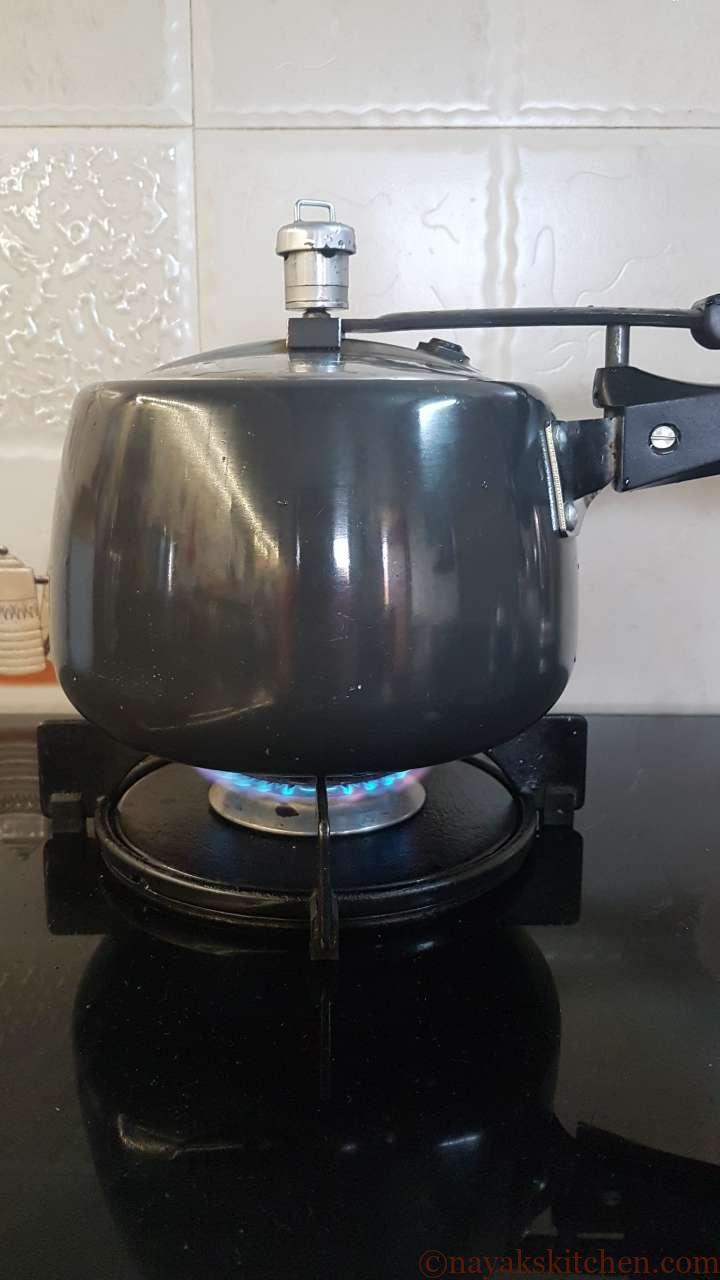
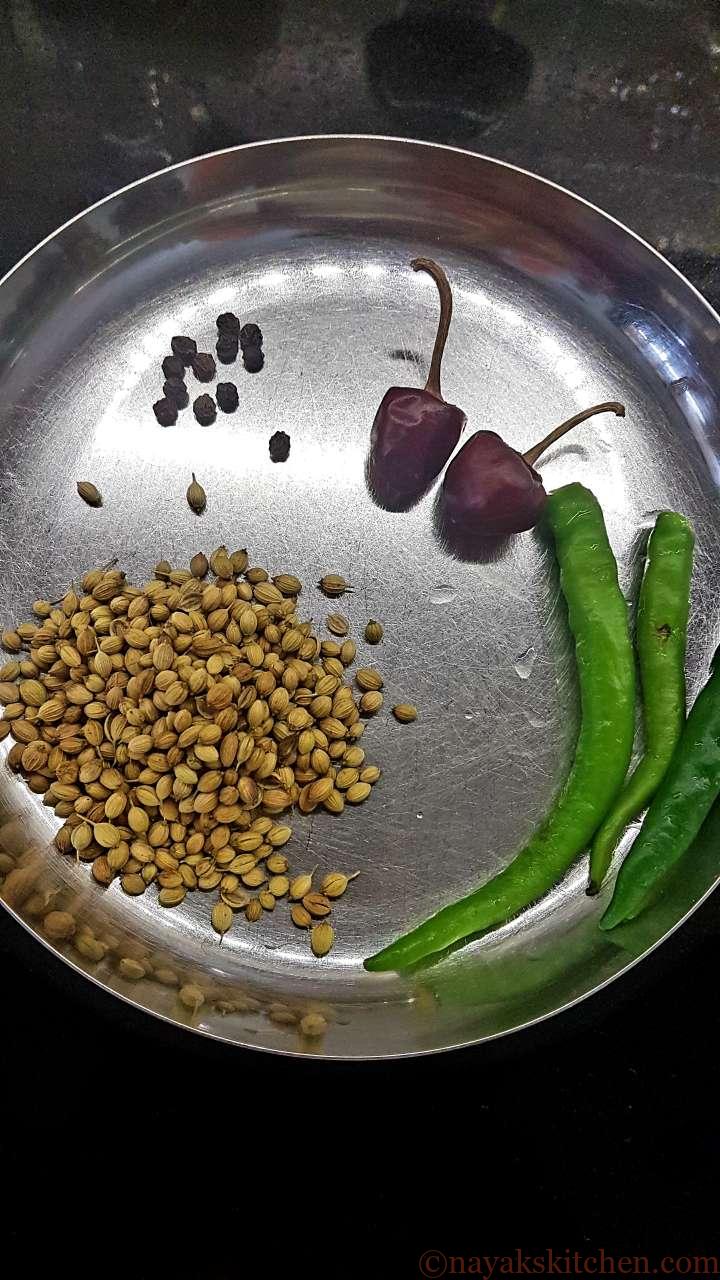
4. First, let us roast and powder the Shankar Chaap hing. (Note: If you do not have Shankar Chaap Hing you can use any powdered hing). Take a small piece (pea size) of hing. Dry roast it in a pan. Allow it to cool.


5. Take the roasted hing pieces in a mortar and pestle. Pound it to a powder.


6. Next, heat a pan and fry green chillies in a tsp of oil.


7. In the same pan fry the remaining spices till an aroma is released. Do not burn. Take the fried green chillies, spices, grated coconut, tamarind and turmeric powder in a mixie jar.
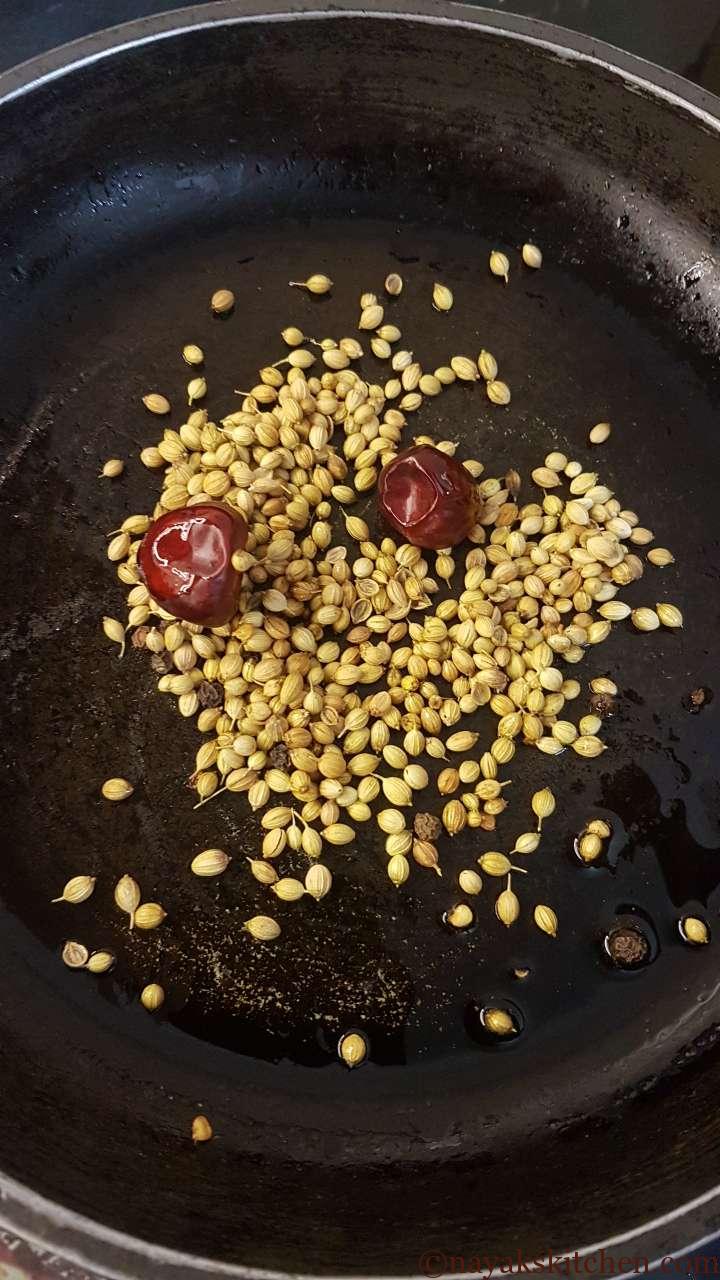

8. Grind all the ingredients with a little water to a paste. Add this paste to the cooked moong.


9. Mix everything well. Adjust consistency by adding the required amount of water. Muga Gathi is always of a thick consistency so do not add much water. Add 1 tsp salt.
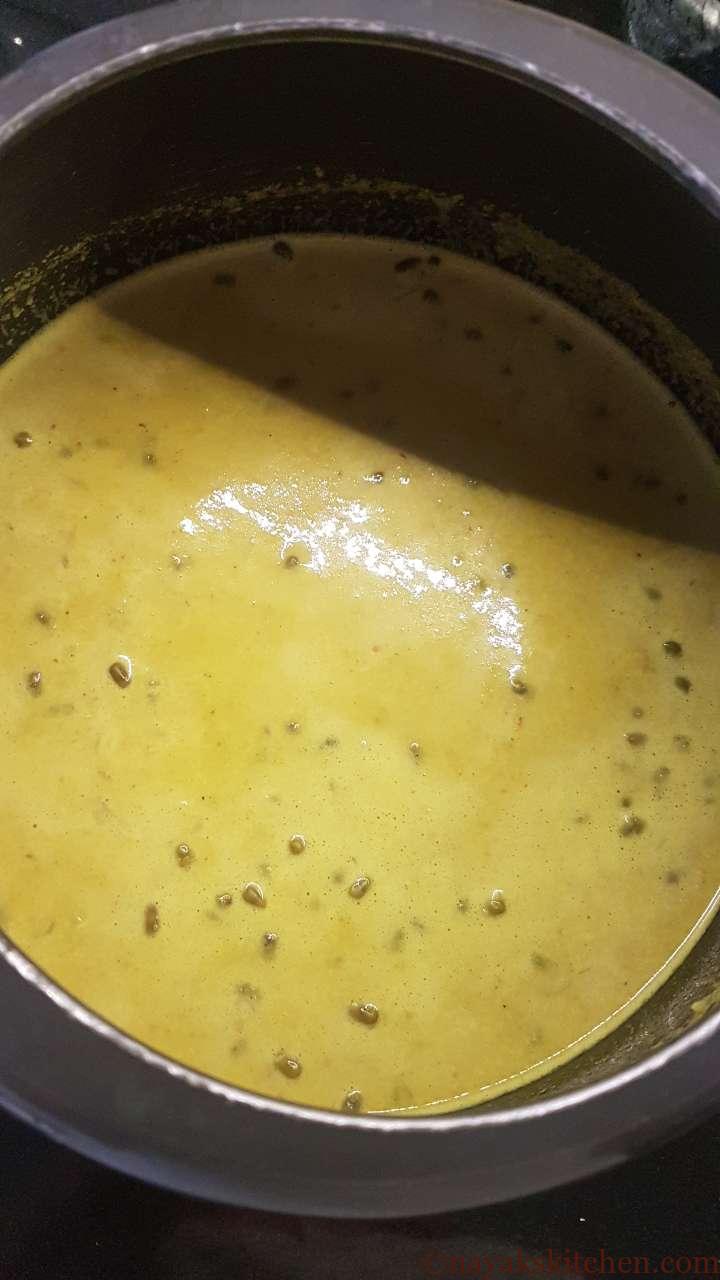

10. Add 1 tsp jaggery and 3-4 nos. dried kokum pieces.


11. Keep all the tempering ingredients ready. Heat oil and add mustard seeds.


12. Further, add hing and curry leaves. Add this tempering to the gravy immediately and cover with a lid.


13. Mix everything well. Serve with poori, chapati, roti or rice.



Muga Gathi | Sprouted Green Gram Curry | How to make Moong Sprouts at home?
Course: Main CourseCuisine: GoanDifficulty: Medium4
peopleMuga gathi or Mooga Gathi is one of the classic and traditional Goan recipes prepared during poojas and religious festivals, especially Ganesh Chaturthi.
Ingredients
1 cup = 250 ml
1 tbsp = 15 ml
1 tsp = 5 ml
Moong (Green Gram) raw – 1/2 cup
Grated coconut – 1 cup (heaped)
Green chillies – 2-3 nos. (slit)
Turmeric powder – 1/4 tsp
Tamarind – small marble size
- Spices
Red Chillies – 2 nos.
Black pepper – 10-12 nos.
Coriander seeds – 1 tbsp
- For tempering
Mustard seeds – 1tsp
Curry leaves – 1 sprig
Hing/Asafoetida (preferably Shankar chaap) – a pea-size piece (or 1/4 tsp)
Jaggery – 1 tsp
Kokum – 4 nos.
Salt – 1 tsp or as per taste
Directions
- Sprouting the moong
- Clean the moong (green gram) and remove any stones. Soak in sufficient water for about 8-10 hrs.
- The skin of the moong will have split into two, once it is soaked well. A few green grams will have started showing sprouts too. Now, drain the water completely. You can either tie the soaked moong in a muslin cloth or keep it covered in a large vessel.
- Once the moong sprout well, take them in a deep-bottomed vessel. Further, add water up to the top of the vessel. Leave it covered with water aside, for 7-8 hours.
- After 7-8 hours you will notice that the skin of the green gram or moong has started floating above the water. Also, the moong has settled below. You will be now easily able to separate the moong from the skins.
- Gently scoop out the moong skins and discard them. If the skins settle to the bottom of the vessel, drain the water. Add fresh water again. The skins will slowly rise to the top. Likewise, scoop the skins as much as possible.
- Keep repeating this till most of the skins are removed. Sprouted moong is now ready to use in your recipe. You can store these green moong sprouts for 3-4 days in the refrigerator.
- Preparing Muga Gathi
- Take the sprouted moong on a plate. Sometimes some moong seeds do not get soaked. Remove any such hard, unsoaked moong.
- Next, take the sprouted moong in a pressure cooker. Add 1/2 tsp salt and hing 1/4 tsp (here I have used regular compound hing or asafoetida powder). Add 11/2 cups of water.
- Pressure cook sprouted moong for 1 whistle only. Else you will end up with a paste of moong. You can also cook in an open pot. However, cooking in an open pot takes a long time. Meanwhile, keep the spices ready.
- First, let us roast and powder the Shankar Chaap hing. (Note: If you do not have Shankar Chaap Hing you can use any powdered hing). Take a small piece (pea size) of hing. Dry roast it in a pan. Allow it to cool.
- Take the roasted hing pieces in a mortar and pestle. Pound it to a powder.
- Next, heat a pan and fry green chillies in a tsp of oil.
- In the same pan fry the remaining spices till an aroma is released. Do not burn. Take the fried green chillies, spices, grated coconut, tamarind and turmeric powder in a mixie jar.
- Grind all the ingredients with a little water to a paste. Add this paste to the cooked moong.
- Mix everything well. Adjust consistency by adding the required amount of water. Muga Gathi is always of a thick consistency so do not add much water.
- Add 1 tsp salt. Add 1 tsp jaggery and 3-4 nos. dried kokum pieces.
- Tempering
- Keep all the tempering ingredients ready. Heat oil and add mustard seeds.
- Further, add hing and curry leaves. Add this tempering to the gravy immediately and cover with a lid.
- Mix everything well. Serve with poori, chapati, roti or rice.
Notes
- Always use a fresh batch of moong. Aged moong may not sprout well.
- If using readymade sprouted moong, use 2 cups for this recipe.
- Once sprouted, check the moong for any hard, unsoaked moong. This is a must as you might hurt your teeth while eating.
- You can use the sprouted moong with the skin.
- Cooking moong – You can cook moong either in an open pot or in the pressure cooker. However, if pressure cooking, cook for 1 whistle only. Else you will get a paste of moong.
- Green chillies give that distinct taste of Muga gathi. Do not skip or substitute with red chillies. However, adjust the number of chillies as per their pungency.
- Shankar Chaap Hing is yet another vital ingredient for muga gathi. However, you can use any other hing if unavailable.
- Mooga gathi gravy is always of thicker consistency. So do not add much water.
- I usually soak 1 cup (250 ml) of raw Moong. This yields 4 cups of sprouted moong. Then I divide it into half. One half I use for Mooga Gathi and the other half for Moong Usal.

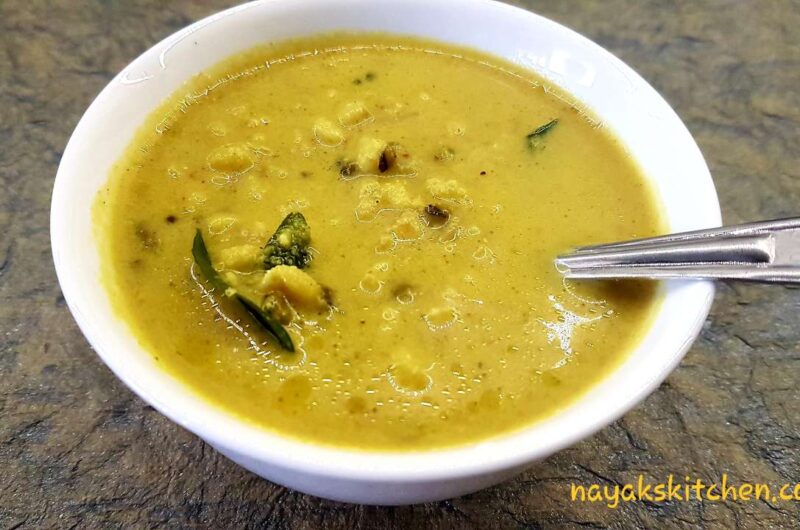



[…] Muga Gathi (Sprouted Green Gram Curry) […]